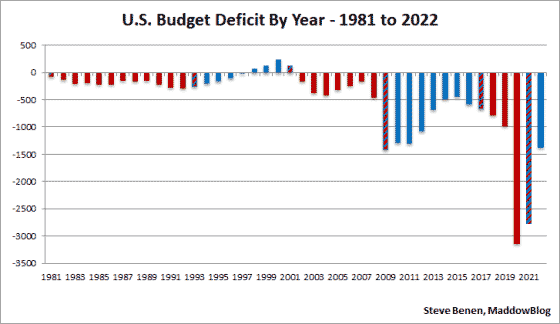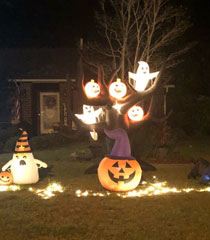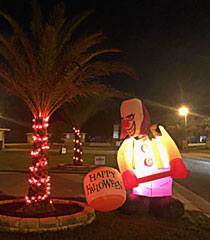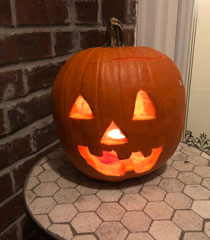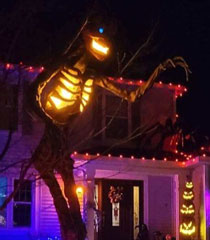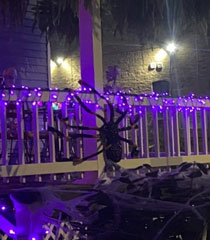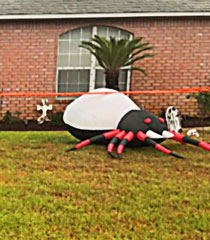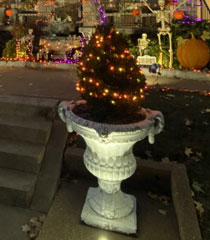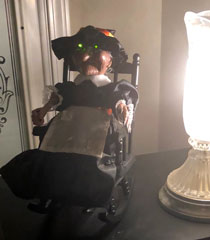 |
The Skarry Skelly 2022 Halloween Message |
|
From ghoulies and ghosties And long-leggedy beasties And things that go bump in the night, Good Lord, deliver us! |
O
h boy. Another election-year Halloween. These days, that's something to be scared about.
According to Nate Silver's FiveThirtyEight website, as of today, 45.9% of voters would prefer to see Republicans in charge of Congress, compared to the 45.1% who'd prefer Democrats. A couple of weeks ago those numbers were flipped, so who knows? But still, it's enough to make you long for Halloweens gone by when nobody thought the polls knew what they were talking about. Sammy generally makes at least a feeble effort to give a fair hearing to both ends of the political spectrum. This election year even a paltry effort at that would be, frankly, a disservice to readers. This time, if Republicans get hold of Congress, nobody can accuse them of not having a thought-out plan. Among the good things many of them think they could accomplish this time around are these.
Astounding that a plurality of would-be voters think these are good ideas. Or are too poorly informed to understand why they're not. Senator Rick Scott of Florida, the chairman of the National Republican Senatorial Committee, published a battle plan earlier this year that he called his “11 Point Plan to Rescue America," which championed many of the above ideas. The Orlando Weekly characterized it as "insane." Forbes Magazine quipped, "If Scott was trying to develop a set of compelling talking points, he did a fine job—for Democrats." Senate Minority Leader Mitch McConnell immediately disavowed the plan. McConnell knows how to win the midterm: Oppose everything Joe Biden does, blame him for anything that goes wrong, and never lay out an agenda that turns the election into a choice rather than a referendum. All well and good. Crossed wires and impetuous talk are to be expected in an election year. But, Jesus, people are buying this? Scott went way beyond impetuous. Many of his ideas were flat-out absurd. Rescue America? From what? Abortion rights have nearly universal support among the American public. So do gay rights. Transgender people are more likely to be seen as an object of sympathy than scorn in this country. Fix the border? Didn't Trump already do that when he made Mexico pay for the wall? The only thing they didn't try last time was killing the children after separating them from their families. Would that be the next step? Republicans fixing the economy and curtailing the deficit? First of all, when has that ever happened? Second, what exactly about the US Economy would the Republicans fix, never even mind how? The Economy under Biden is enjoying its best days since the time of Clinton. True, US. GDP fell by a 1.6% annualized rate in the first quarter of 2022 and fell again in the second quarter ... by a paltry 0.6%. The third quarter reported in with a 2.5% increase. So much for a recession. Payroll employment, industrial production and real incomes are all healthy and growing. Gross Domestic Income this year by quarter has risen by 1.8% and 1.4% respectively. The unemployment rate stands at 3.5%. Sorry, guys, your dreams have turned to dust. No finanicial collapse this time.
Carping about runaway spending while Democrats occupy the White House is, of course, de rigueur. But almost unnoticed—certainly unremarked—the Biden administration has halved the fiscal deficit in its first two years. For the 2022 fiscal year, just ended, outlays did climb 9% but receipts grew by 30%, thereby reducing the deficit by $1.3 trillion for the year. A record of accomplishment Republican administrations—who are the real deficit growers, you can look it up— never achieve. During the Trump Administration the deficit went up every single year. Why on earth do people want to go back to that? Of course Biden got some unfair help. His Administration proved adroit in operating during a Covid Pandemic. Budgets weren't the only thing Trump's people couldn't manage. (At one time Trump pledged to eliminate the national debt within eight years. If Republicans had really dealt with any of these things properly, Democrats wouldn't be dealing with them now, including inflation.) Yes, yes, yes. Inflation! We all feel it. A buddy just spent twelve bucks for a chicken breast. Even the chicken was outraged. But the test of a president isn't whether he has to deal with inflation, currently a nasty problem and a predictable one in the face of the Covid-induced economic slowdown and disjointedness, affecting just about every one of the world's developed economies. Inflation, like so many things, however it arrives is generally not the making of a head of state. The test is how he deals with it. And, as bad as it is, the US under Biden is dealing with it better than most countries. By way of analogy, it wasn't former President Trump's fault we got all caught up in a Covid pandemic. His problem was that he didn't do more to shape a federal response, instead of trying to downplay it because he was afraid it would make him look bad. And it was he personally who chose not to be more honest about the true nature, scope and threat of the pandemic, which he really had been briefed on. Briefed to death. No pun intended. The National Retail Federation’s annual survey (conducted by Prosper Insights & Analytics) predicts Halloween spending this year will increase slightly this year (up 5% from last year). Enthusiasm for the event is supposedly on the rise as well. But last night's neighborhood drive in search of Halloween house decorations suggested people are holding back this year. Tired and depressed, perhaps, by all the things they've had to put up with in the last two years, including Donald Trump? In any event, far fewer displays than in prior years, at least in Milton. Many streets with none for blocks, and with scaled-down efforts where they were to be found. Have yourselves a fun Halloween, guys. But be careful. The mood is a little sour, the streets are a little darker, crime is up, and there are far more politically agitated people wandering the streets looking for someone to take it out on. Stick close to the ghosts and goblins and the ghoulish monsters; you'll be much safer this year in their company. Love, |
 websitesammy home page |
The All Saints’ Day celebration was also called All-Hallows or All-hallowmas (from Middle English Alholowmesse meaning All Saints’ Day) and the night before it, the traditional night of Samhain in the Celtic religion, began to be called All-Hallows Eve and, eventually, Halloween. ("Hallows" is Gaelic for Saints")
The immigrants celebrated as they did in their homelands—which often included pulling pranks. Common Halloween tricks included placing farmers’ wagons and livestock on barn roofs, uprooting vegetables in backyard gardens and tipping over outhouses. By the early 20th century, vandalism, physical assaults and sporadic acts of violence were not uncommon on Halloween.
By the time of the Great Depression in America, violence around Halloween—no doubt exacerbated by dire economic conditions—had reached new highs. Parents, concerned about children running amok on All Hallows' Eve, organized “haunted houses” or “trails” to keep them off the streets.
Around the time neighborhoods began organizing activities to keep kids safe and occupied, costumes became more important (and less abstract and scary). And take the form of characters from popular radio shows, comics and movies. In the '50s, mass-produced box costumes became popular, and trick or treaters began to dress up as princesses, mummies, clowns or more specific characters like Batman and Frankenstein’s monster.
The paranoia reached new heights in the early 1980s after a rash of Tylenol poisonings in which cyanide-laced acetaminophen was placed on store shelves and sold. After the Tylenol murders, which are still unsolved, warnings about adulterated Halloween candy increased.
In the mid-1980s, the Coors Brewing Company ran an ad campaign featuring TV horror host Elvira. It helped make the ghoulish night a “beer holiday” in the mold of Super Bowl Sunday and St. Patrick’s Day. Today Americans buy enough Coors beer at Halloween to increase seasonal sales by 10 percent.
Capitalizing on the party mood, retailers began pushing theatrical costume offerings: pin-up pirate, naughty nurse, even sexy Big Bird. Skimpy Halloween get-ups have long been available but in the last decade but now the prevalence of sexy costumes has exploded, according to Lesley Bannatyne, author of “Halloween Nation: Behind the Scenes of America’s Fright Night.”
Why the desire to flaunt so much skin for a celebration that comes around just when temperatures are taking a downward turn?“Whatever box you’re in, Halloween is when you get out of it, and for some, sexiness or outrageousness is their expression of getting out of it,” Bannatyne says.
